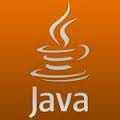Java Database Application with Apache Velocity Introduction to Apache Velocity Please Refer the article Spring with Apache Velocity also read: Java Tutorials Java EE Tutorials Design Patterns Tutorials Java File IO Tutorials Introduction to JDBC JDBC stands for Java DataBase Connectivity. The JDBC API helps us to develop Java applications with data base connection. We …
Apache Velocity
Spring with Apache Velocity
Introduction Spring is an open source framework, created by Rod Johnson. We can develop many kinds of applications using Springwhich includes basic java programs and enterprise applications. Any Java application can benefit from Spring in terms of simplicity, testability, and loose coupling. Spring supports integration with Struts, WebWork, Apache velocity , Hibernate, JDO, TopLink, EJB, …


